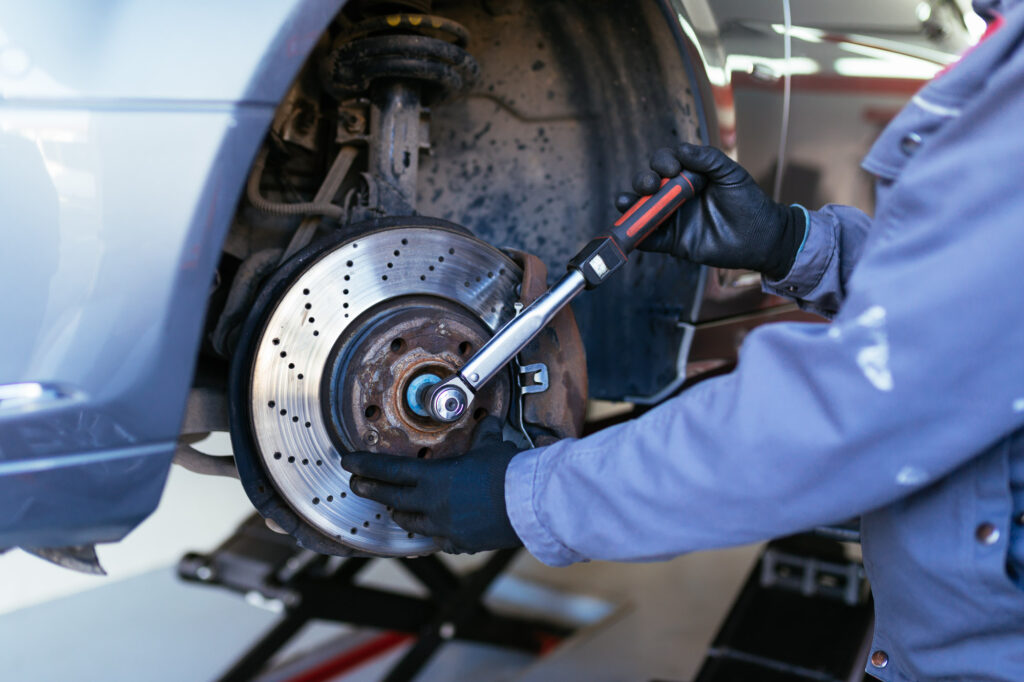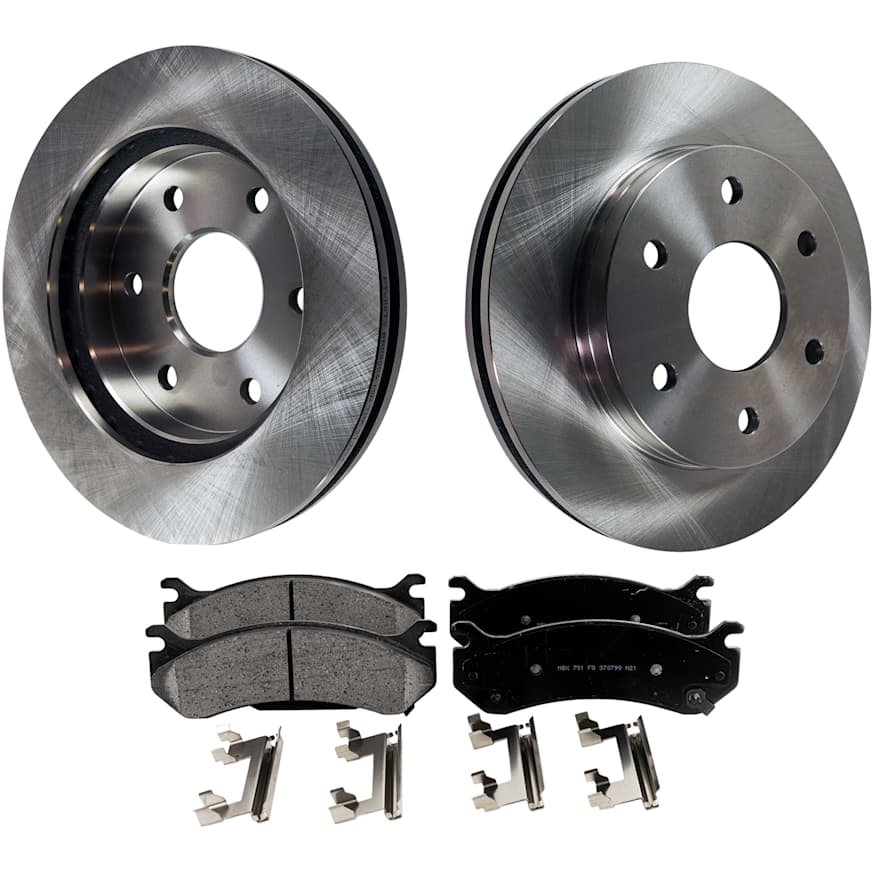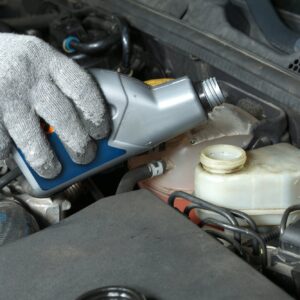The braking system should always be in optimal condition.
Fully functioning brakes ensure that you’re able to stop your vehicle when needed, reducing the risk of collisions. Like the engine and transmission, the brake system should also be serviced, depending on the manufacturer’s recommendations.
While replacing worn-out brake pads and bleeding the brakes are some of the most common maintenance tasks you shouldn’t miss, there might be times when a complete brake job is needed to ensure your safety.
How Long Does It Take to Do a Brake Job?

A complete brake job has an estimated labor time of anywhere between four and six hours, depending on several factors. These factors generally include the type of vehicle, the extent of damages, and the skill level of the mechanic.
A complete brake job is a thorough inspection of every brake part in the system, which explains why the task can take a while. It’s also more than just a brake pad and rotor replacement.
You can expect to spend more than a few hours at the shop at the expense of ensuring that your brakes will do their job once the mechanic is done with them.
Note from Richard McCuistian, ASE Certified Master Automobile Technician:
Unless your vehicle is from a northern climate where they put salt on the roads and all the brake lines and parts are rusty, you probably won’t ever need a comprehensive brake job. Many shops charge a lot of money to do brakes when DIY people who are careful can do it themselves.
Example: One shop in a college town wanted $300 to do the rear brakes on a 2001 Taurus. The owner bought a $16 set of rear brake shoes and did it in the driveway in about 45 minutes, which included adjusting the brakes. In most cases, if you have a safe way to raise the vehicle and have a bit of DIY knowledge you can save a ton of money by doing your own brakes.
What Does a Car Brake Job Entail?
A complete brake job involves a thorough inspection of the entire braking system and its parts. Mechanics usually check for leaks, corroded brake lines, seized pistons, and other worn-out brake hardware.
Here’s a breakdown of the tasks involved during a complete brake job:
- Replacement of cracked and leaking hoses
- Replacement of corroded steel lines
- Caliper/wheel cylinder replacement/repair
- Master cylinder inspection
- Brake rotor and drum inspection
- Brake hardware inspection
- Replacement of retaining clips and return springs
- Replacement of self-adjusters
- Service wheel bearings
- Brake system lubrication
- Brake fluid replacement
- Bleed brake lines
- Parking brake inspection
- Trouble code check (look for ones related to the braking system)

Essential Parts to Service During a Brake Job
All parts of the braking system are important, but there are some components that tend to bear the brunt of the work when it comes to stopping a vehicle.
Here are some of the major brake parts you might want to keep an eye on when servicing your brakes.
ABS Control Module
The anti-lock braking system (ABS) is a safety feature that prevents the wheels from locking up under sudden braking conditions. It helps minimize the risk of skidding so that the vehicle can stop in a straight line.
The ABS has a control module that relies on the input from wheel speed sensors. If the control module notices that one wheel isn’t turning as fast as the others, it’ll command the system to reduce hydraulic pressure on the brakes of the affected wheel.
Brake Booster
The brake booster is most often a vacuum-powered component (but may use power steering fluid pressure for brake assist) that multiplies the force of the brake pedal. Basically, the brake booster is what allows your vehicle to come to a full stop even if you apply minimal pressure on the brake pedal.
Any issue with the brake booster and its related components can make the brake pedal feel hard to press, increase stopping distances, and cause the engine to run rough or stall when braking.
Brake Pads
Brake pads are blocks of friction materials that come into contact with the rotors every time you step on the brake pedal.
Brake pads wear out after some time due to extreme heat generated by friction, which is why a lot of manufacturers offer mechanical and electrical pad wear indicators.
Brake Caliper
The brake caliper houses the brake pads and pistons. It fits over the rotor and stops the wheel from turning when activated with hydraulic fluid.
Brake calipers can wear out or corrode after some time, creating problems like squealing or grinding brakes, a spongy brake pedal feel, and fluid leaks, among others.
Rotor
The rotor is the largest part of the disc brake. It provides the friction surface for brake pads to rub against.
Typically made from cast iron, brake rotors can either be solid or vented. Solid rotors are usually found in vehicles with four-wheel disc brakes. Meanwhile, vented rotors come with cooling passages between the friction surfaces.
Brake Lines
Brake lines connect the master cylinder to each wheel. These steel pipes or tubing carry brake fluid from the master cylinder all the way to the ABS hydraulic control unit, wheel cylinders, and brake calipers.
Master Cylinder
The master cylinder is the heart of the entire braking system. This is where the brake pedal linkage is attached to.
The master cylinder acts as a hydraulic pump that pressurizes the brake lines, depending on the input from the brake pedal. It’s divided into two pressure-building chambers to provide braking force to one-half of the brake in case of leaks.
Major braking problems can arise if there’s an issue with the master cylinder.
One of the noticeable problems you might encounter is inconsistent braking performance, which is when a loss of braking power happens randomly. This occurs when hydraulic fluid leaks past the seals inside the cylinder.
Other symptoms of an inoperable master cylinder include a spongy brake pedal feel and fluid leaks.
Brake Drums and Brake Shoes
Brake shoes are part of the drum brake system. They’re inside the brake drum and have a friction material on one side.
Brake shoes serve a similar purpose with brake pads, but they work a bit differently. Brake shoes are also found in older vehicles that don’t come with a four-wheel disc brake setup but are also on many newer vehicles, such as the VW ID.4 and the Audi Q4 e-tron, both electric vehicles. The Toyota Tacoma still features drum brakes, as does the Mitsubishi mirage.
What Is the Cost of a Standard Brake Job?
Brake job prices can vary depending on your vehicle’s specifications and labor rates.
A complete brake repair can cost anywhere between $300 and $800, but other repairs can easily get your total bill to $2,000 or more.
In the Market for New Brakes for Your Vehicle?
Once you’ve found the right brakes for your ride, all you have to do is order it and wait for it to arrive. Shipping auto parts can be costly, but with a CarParts Plus membership, you can save a lot of money.
CarParts+ offers excellent benefits, including free shipping. This means you’ll get easy access to 500,000 unique parts – all of which are ready to be delivered right to your doorstep.
You’ll also get access to other exclusive perks such as VIP Customer Service, 24/7 Roadside Assistance, and Extended Returns. Sign up for CarParts Plus today to have that extra confidence on the road.
Where to Get Replacement Brake System Parts
You should never drive with a faulty brake system. Damaged parts can cause your brakes to respond slowly, making it hard to stop your vehicle safely. This puts you at greater risk of getting into an accident, so it’s best to avoid driving until you fix the issue first. Luckily, getting replacement brake system parts is easier than ever with CarParts.com.
From ABS control modules to brake calipers, you can find everything you need here at CarParts.com. Enjoy high-quality brake system parts at affordable prices. If you find a product being sold at a lower price, let us know and we’ll beat their price on the spot! Just reach out to our customer support staff, who offer round-the-clock support.
Don’t wait until your brake system completely fails before replacing the faulty part. Check out our catalog of ABS control modules, brake boosters, and other brake system parts at CarParts.com and order yours today!
Any information provided on this Website is for informational purposes only and is not intended to replace consultation with a professional mechanic. The accuracy and timeliness of the information may change from the time of publication.

































